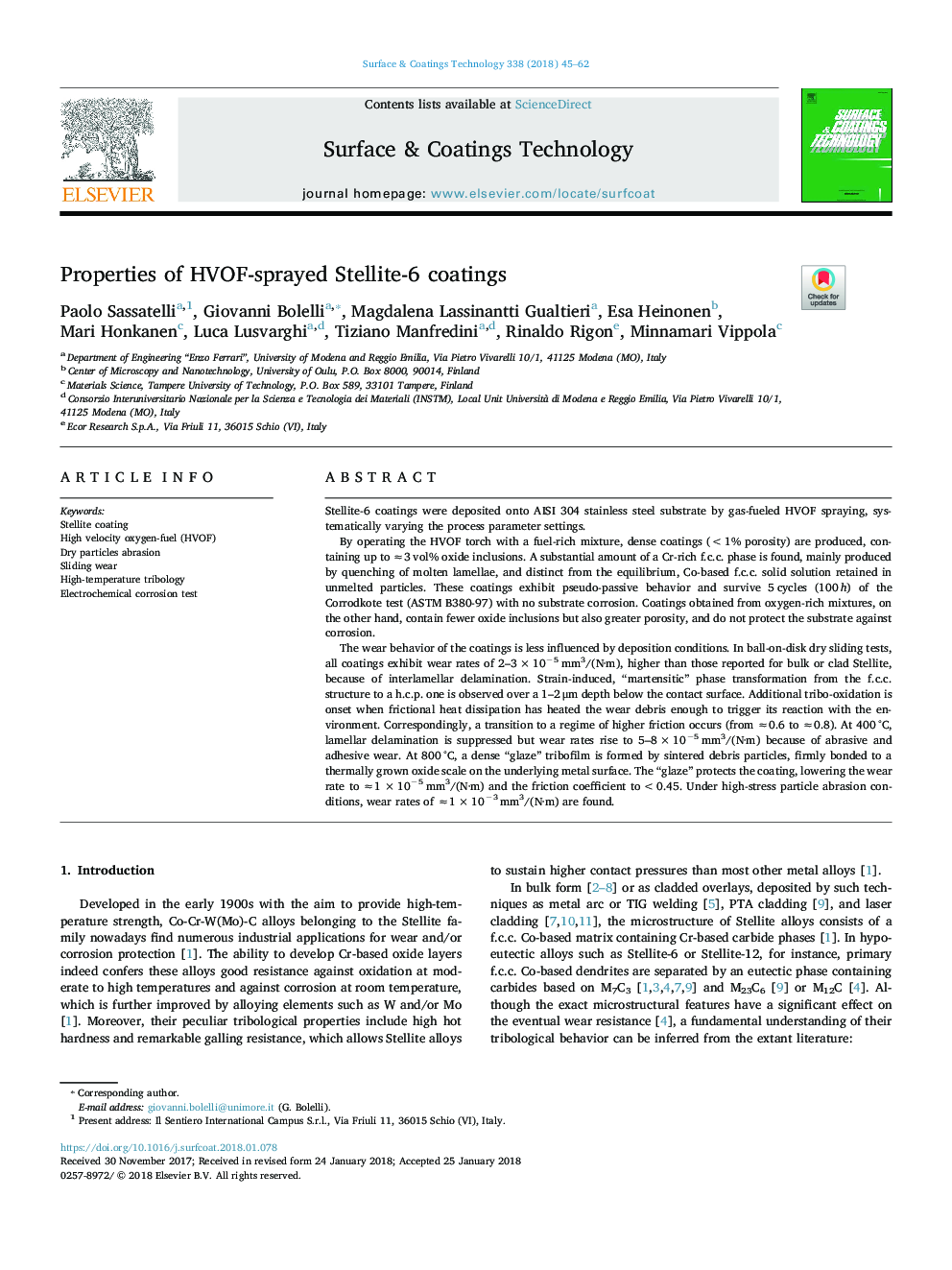| Article ID | Journal | Published Year | Pages | File Type |
|---|---|---|---|---|
| 8024147 | Surface and Coatings Technology | 2018 | 18 Pages |
Abstract
The wear behavior of the coatings is less influenced by deposition conditions. In ball-on-disk dry sliding tests, all coatings exhibit wear rates of 2-3â¯Ãâ¯10â5â¯mm3/(N·m), higher than those reported for bulk or clad Stellite, because of interlamellar delamination. Strain-induced, “martensitic” phase transformation from the f.c.c. structure to a h.c.p. one is observed over a 1-2â¯Î¼m depth below the contact surface. Additional tribo-oxidation is onset when frictional heat dissipation has heated the wear debris enough to trigger its reaction with the environment. Correspondingly, a transition to a regime of higher friction occurs (from â0.6 to â0.8). At 400â¯Â°C, lamellar delamination is suppressed but wear rates rise to 5-8â¯Ãâ¯10â5â¯mm3/(N·m) because of abrasive and adhesive wear. At 800â¯Â°C, a dense “glaze” tribofilm is formed by sintered debris particles, firmly bonded to a thermally grown oxide scale on the underlying metal surface. The “glaze” protects the coating, lowering the wear rate to â1â¯Ãâ¯10â5â¯mm3/(N·m) and the friction coefficient to <0.45. Under high-stress particle abrasion conditions, wear rates of â1â¯Ãâ¯10â3â¯mm3/(N·m) are found.
Keywords
Related Topics
Physical Sciences and Engineering
Materials Science
Nanotechnology
Authors
Paolo Sassatelli, Giovanni Bolelli, Magdalena Lassinantti Gualtieri, Esa Heinonen, Mari Honkanen, Luca Lusvarghi, Tiziano Manfredini, Rinaldo Rigon, Minnamari Vippola,
